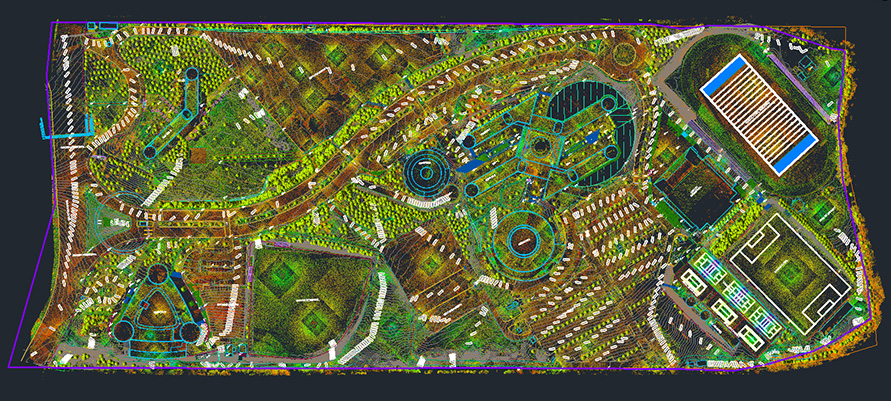
Topographic survey with Laser Scanner
Topographic survey Tec de Monterrey / AEC Technology. Construction is an industry that has always been in constant evolution, from ancient times to our days,

Construction is an industry that has always been in constant evolution, from ancient times to our days, and has seen a great number of technological advances in recent years. One of the most significant advancements in the construction industry is the use of topographic surveys with laser scanners. This article will focus on topographic surveying and how laser scanners have transformed this discipline.
Topographic surveying collects information about the terrain and its surroundings and is fundamental for the planning and execution of construction projects, risk management, and environmental conservation. Its main objective is to create a detailed and accurate model of the terrain, which includes elements such as building height, tree location, terrain topography, and the location of roads and watercourses.
The information obtained is used to make decisions about the planning and design of construction projects, environmental management, and the prevention of natural disasters. Techniques and technologies such as manual measurements, laser scanners, GPS technology, and electronic leveling sensors are used to carry out a topographic survey. Since it is a complex process that requires technical skills and knowledge, it is recommended to work with highly trained and experienced professionals in the field.
A Laser Scanning Survey is a modern technique for data collection. This technique can be used to create a three-dimensional representation of an object or scene. The laser scanner takes precise measurements and creates a three-dimensional map of a moving object. Multiple measurements can be taken at the same time, allowing for real-time data. This technique is increasingly used in engineering, architecture, medicine, archaeology, and other fields.
A topographic survey with laser scanning is a process that involves using a laser scanner to measure the shape and elevation of the earth’s surface. The laser scanner measures the distance to a surface and generates a three-dimensional map of it. This type of topographic surveying is a more accurate and efficient alternative to traditional methods, such as measurements with theodolites and levels.
Laser scanners are advanced instruments that use LiDAR technology to measure the distance to objects and surfaces. These devices are widely used in various industries, including construction, archaeology, surveying, engineering, among others. The technology behind laser scanners is complex, but at the same time, it is fascinating and revolutionary.
LiDAR is an advanced laser scanning technology used for mapping and measuring objects over long distances. This technology is based on time-of-flight distance measurement, using laser pulses and optical sensors. LiDAR allows users to better understand distant objects, which is applied to terrain and environment mapping. This technology is used to create a three-dimensional image of terrain and is one of the most efficient systems for surveying and mapping large areas. Laser scanners emit light pulses that penetrate the terrain and measure the distance of objects. The information is processed in a terrestrial laser scanner to record the location and orientation of objects in the scanned area and create a three-dimensional image of the terrain. LiDAR systems are widely used for road construction, terrain monitoring, environmental decision-making, product manufacturing, and robot navigation.
Accuracy: Laser scanners allow for precise and repeatable measurements, even in environments with a lot of interference. This ensures that topographic surveys are accurate and reliable.
Speed: Laser scanners are much faster than traditional methods of topographic surveying. They can scan a large surface area in a short amount of time, which reduces project time and costs.
Three-dimensional representation: Laser scanners allow for the generation of accurate and detailed three-dimensional models of the Earth’s surface. These models can be used for a wide variety of applications, including planning and executing construction projects, risk management, and more.
Flexibility: Laser scanners can be used in a wide variety of environments, from indoor to outdoor, making them suitable for a wide range of projects.
Error reduction: The precision and speed of laser scanners allow for a significant reduction in the margin of error in topographic surveys. This is especially important in critical projects, where any error can have serious consequences.
Laser scanners have proven to be an essential tool for topographic surveys. These measurement systems allow professionals to perform measurement work with a high degree of accuracy and unprecedented speed and precision. This unique tool has opened up new possibilities for professionals involved in Construction, Engineering, and Architecture.
For more information and professional advice on the importance of using laser scanners for your topographic surveys, you can contact us through AEC Technology, a division of C&C Consulting Construction Group.

Topographic survey Tec de Monterrey / AEC Technology. Construction is an industry that has always been in constant evolution, from ancient times to our days,